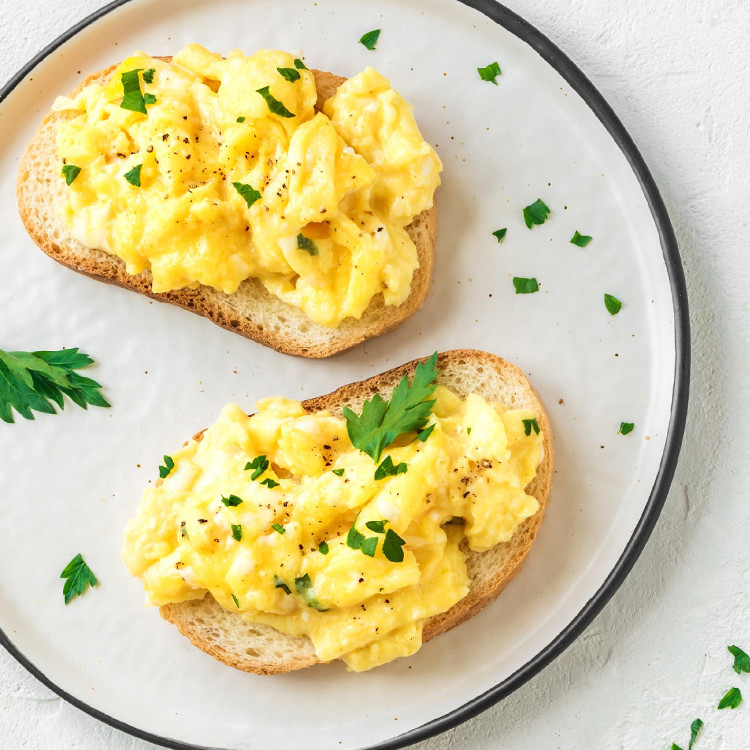
How to Cook Scrambled Eggs
Soft and fluffy scrambled eggs are easy to make so long as you use the right method. In this post, I’ll explain how to cook scrambled eggs perfectly every time, whether it’s better to use milk or water in your eggs (or neither!), what to serve with scrambled eggs, and so much more!
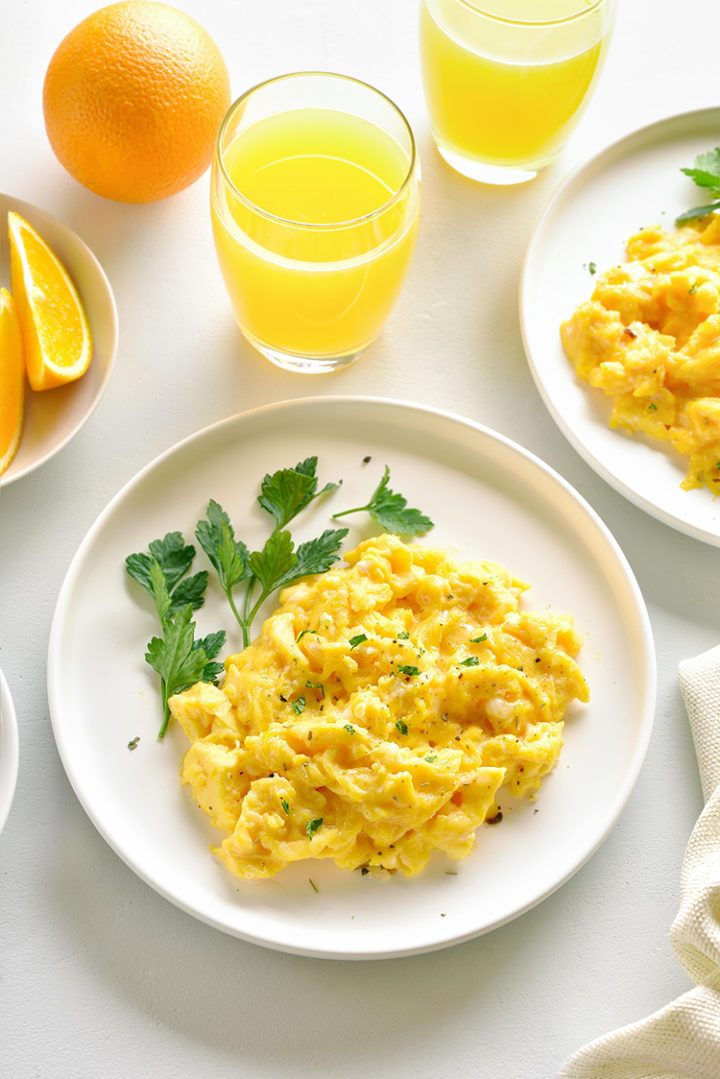
Scrambled eggs are one of the simplest dishes you can make at home … and also one of the easiest to get wrong.
If you cook scrambled eggs for too long or over too high of heat, they’ll wind up rubbery, dry, hard — or an unappetizing combination of all of the above.
Or, they’ll stick to the pan.
And if you add too much milk or water to your eggs, they’ll wind up being soggy and flavorless.
Who knew such a basic recipe could go so wrong?
To ensure scrambled egg success every time, I’m sharing my go-to method for making perfect scrambled eggs.
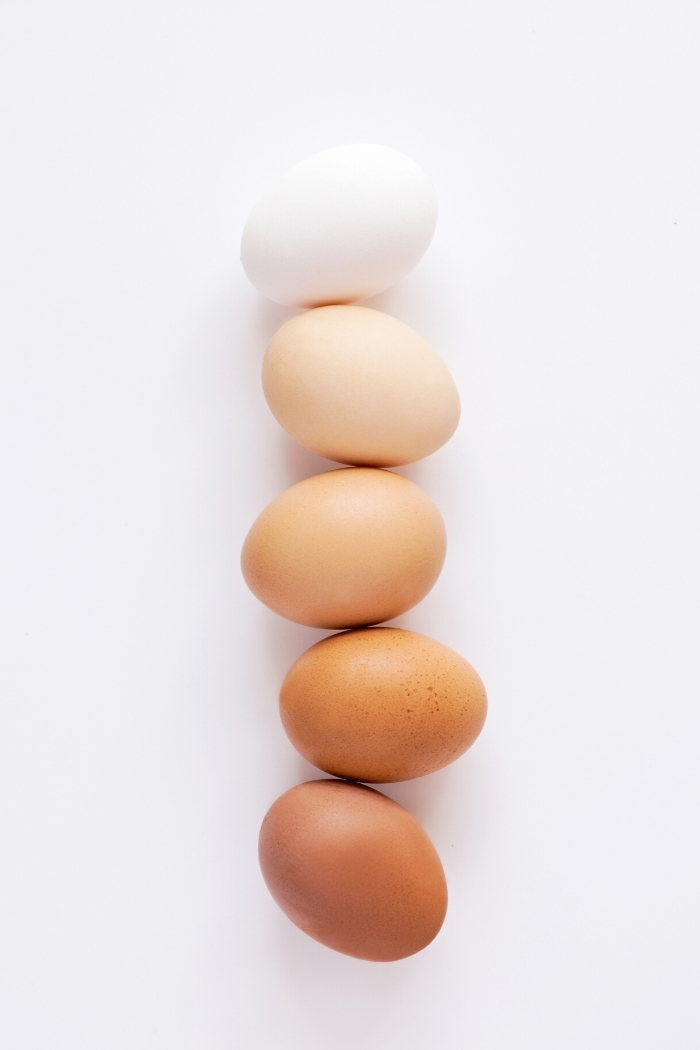
Ingredients Needed
You can add so many veggies, cheeses, and spices to your scrambled eggs. But before you do that, you need to learn the basics to cooking scrambled eggs.
For basic scrambled eggs, you’ll need:
- Eggs — The exact cook time will differ depending on how many eggs you’re using.
- Salt — Kosher salt is ideal, but regular table salt will also do the job.
- Freshly ground pepper — Freshly cracked is much more flavorful than pre-ground black pepper.
- Milk — Imparts more flavor than water and prevents the eggs from developing a rubbery texture. The more milk, the softer the eggs! (Just don’t add too much!)
- Butter — Coats the pan and helps prevent the eggs from sticking. Plus, the extra fat amps up the flavor of your scrambled eggs.
Ingredient Swaps
- Butter: Clarified butter or ghee would both work in place of regular butter. It’d just make for slightly richer, more savory scrambled eggs. (Learn how to make clarified butter if you’d like to make your own rather than using store bought.)
- Milk: If you don’t have any milk on hand, you may also use water. Note that water creates more steam and would make even fluffier scrambled eggs. A non-dairy milk would also technically work, but be sure to use one that’s fairly neutral in flavor (i.e. not something like coconut milk).
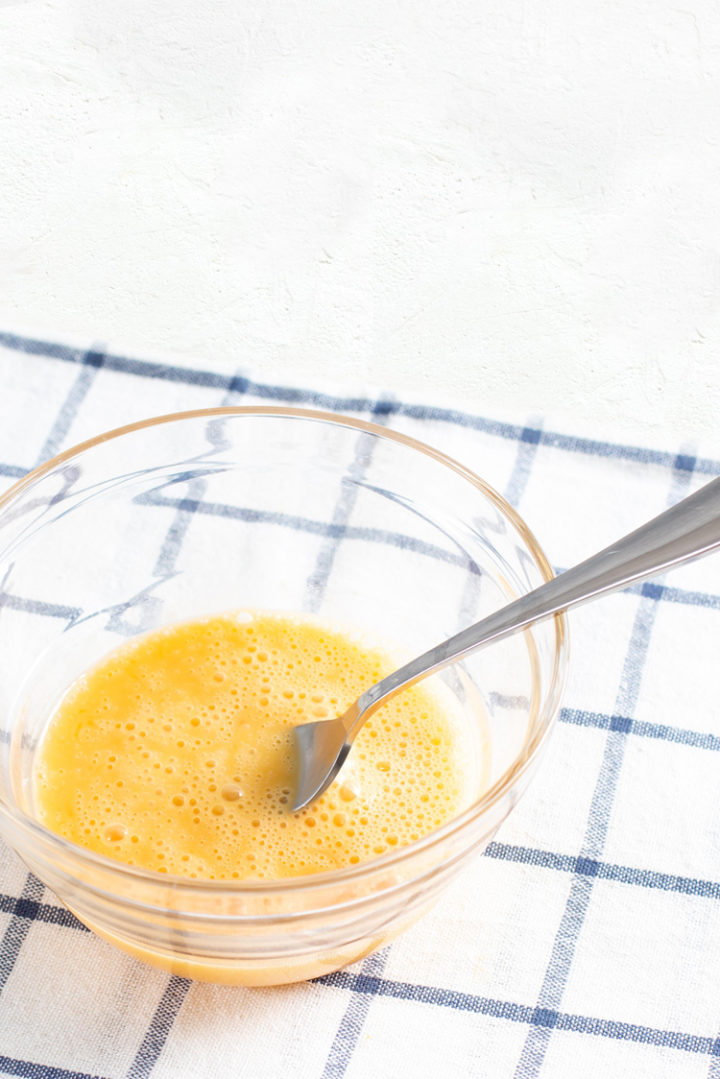
How to Cook Scrambled Eggs
I’ve been making scrambled eggs with this cooking method for years, and it results in soft and fluffy eggs every time!
If you want to know how to make scrambled eggs fluffy, here’s how:
- To a medium-sized bowl, add 2 eggs, salt, pepper, and milk.
- Whisk the eggs with a fork just until large bubbles form. You should no longer see streaks in the egg mixture.
- Heat the butter in a 10-inch skillet.
- When the butter begins to foam, gently swirl the pan to coat the bottom and sides with the butter.
- Before the butter is finished foaming, pour the eggs into the skillet.
- Slowly push the eggs from one side of the pan to the other. I like to use a wooden spatula to lift and fold the eggs as I’m moving them across the pan.
- Transfer the eggs to a plate once they form curds and clump into a single mound, but still look shiny and wet.
Katie’s Tip: Perfectly cooked scrambled eggs will look borderline underdone when you remove them from the heat. Don’t worry, they’re cooked and safe to eat!
Scrambled Egg Cook Times
You should cook scrambled eggs in a preheated skillet over high heat. The cook times will be as follows:
- 2 eggs: 30 to 45 seconds
- 4 eggs: 1 minute
- 12 eggs: 2 ½ to 3 minutes
Katie’s Tip: The cook times listed above result in soft and fluffy scrambled eggs. For creamy scrambled eggs, cook the eggs for a few seconds less. For hard scrambled eggs, cook them 15 to 20 seconds longer.
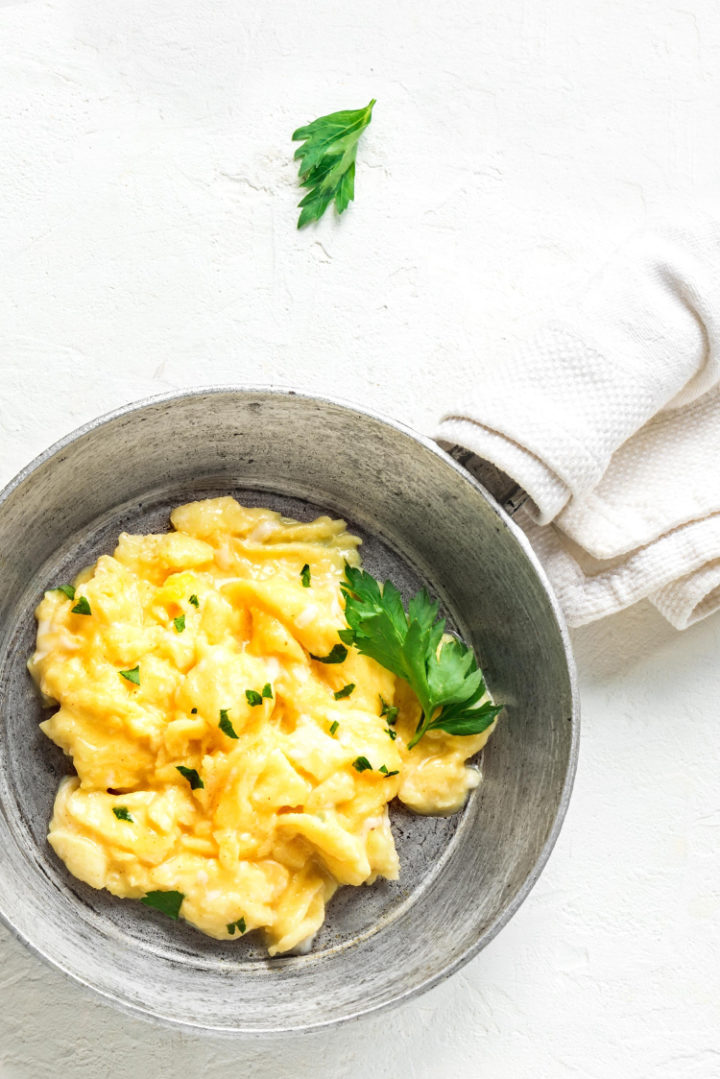
How to Tell When Scrambled Eggs Are Done
Scrambled eggs cook very quickly, so you’ll need to keep an eye on them and be prepared to pull them off the heat at a moment’s notice.
To tell when scrambled eggs are done, look to see if they’re forming curds. They should be able to clump together in a single mound but still be shiny and wet.
The eggs will look almost underdone, but that’s what you want! Remember that scrambled eggs keep cooking even when they’re taken off the heat. The residual heat within the curds will produce steam and continue cooking the eggs.
Tips for Success
- Curd size: Scrambled eggs with larger curds will keep cooking once they’re taken off the heat (the larger curds trap steam!). Aim for smaller curds to create soft and fluffy scrambled eggs.
- For fluffy scrambled eggs: Whisk the eggs just until large bubbles form and there are no streaks. You’ll also want to add a little milk to the egg mixture.
- Whisking the eggs: Don’t whisk the eggs too strongly, otherwise the proteins in the eggs will coagulate before they even hit the hot pan. Whisk just until large bubbles form, and no longer.
- Heat level to use: Cook scrambled eggs over high heat. You want them to begin cooking as soon as they hit the pan. However, when cooking scrambled eggs over high heat you must stir them slowly but constantly to prevent them from overcooking.
What Type of Pan Is Best for Scrambled Eggs?
Cast iron is ideal for this easy scrambled eggs recipe as it’s naturally non-stick (so long as you season it properly!).
Stainless steel also works, but the scrambled eggs will stick if you don’t melt and swirl the butter properly.
Katie’s Tip: I recommend using an 8-inch skillet if you’re making just 2 eggs, and a 10-inch skillet for 4+ eggs.
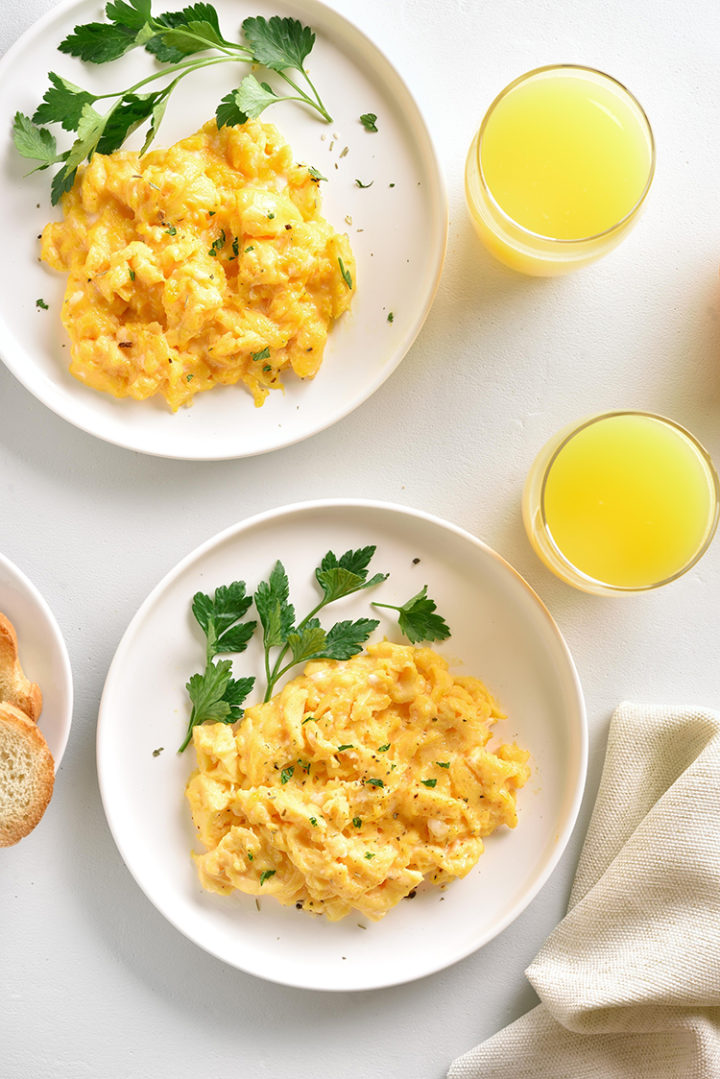
Seasoning Ideas
Making the “best” scrambled eggs depends largely on your personal preferences. I prefer seasoning my eggs with salt and pepper, but the seasoning options are endless!
Here are more scrambled egg ideas you can try:
- Garlic powder
- Onion powder
- Smoked paprika
- Taco seasoning
- Red pepper flakes
- Chili powder
- Everything Bagel Seasoning ( I love this sprinkled on top of eggs!)
Mix-In Ideas
In addition to playing around with various seasonings, you can add pretty much any mix-in you’d like to your soft scrambled eggs.
Here are some scrambled egg mix-ins you can try:
- Shredded cheese
- Chopped fresh herbs (parsley and chives are both especially good!)
- Sauteed vegetables (onions, bell pepper, zucchini, etc.)
- Cooked breakfast sausage
If adding meat or veggies to your homemade scrambled eggs, make sure to cook them to your liking before adding them to the eggs. Scrambled eggs take mere minutes to cook, which isn’t enough time to, say, brown sausage or saute vegetables.
Adding Cheese to Scrambled Eggs
If you prefer cheesy scrambled eggs, be sure to shred the cheese before adding the eggs to the pan. Once the eggs start cooking, you’ll need to constantly (but gently!) stir them and won’t be able to shred the cheese.
Add shredded cheese to the pan once the scrambled eggs are about 75% done cooking. You want to give the cheese enough time to melt into the eggs, but you don’t want to prevent them from forming curds.
Plus, if you add the cheese to eggs too soon, it’ll be impossible to tell when the eggs are done. It’ll look like a melty, cheesy mess and you’ll likely wind up overcooking the eggs by mistake.
Katie’s Tip: Milder, more buttery cheeses complement savory scrambled eggs better than stronger cheeses.
How Many Eggs Per Person for Scrambled Eggs?
I typically prepare two eggs per person. Scrambled eggs are almost always served alongside toast, fruit salad, or heartier breakfast entrees like pancakes and waffles. As such, you don’t need more than two eggs as a side dish.
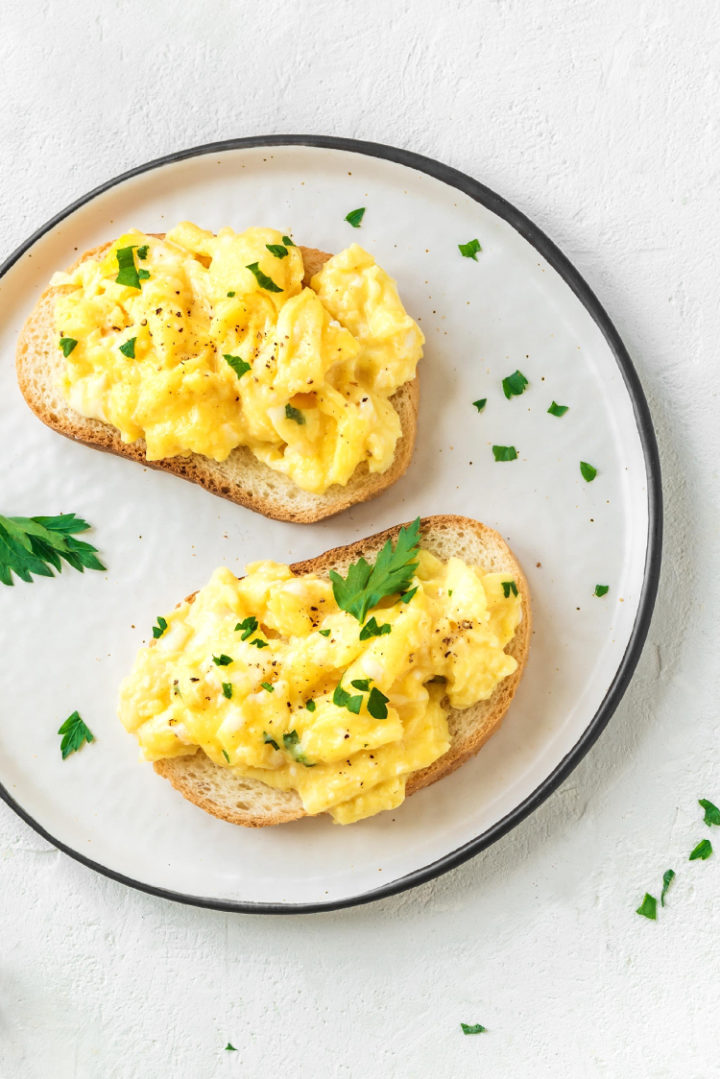
Ways to Eat Scrambled Eggs
Now that you know how to make perfect scrambled eggs, it’s time to dig in! Here are a few of my favorite ways to eat scrambled eggs:
- Topped with salsa (we love this salsa verde and this restaurant-style salsa)
- On a toasted English muffin with cheese
- In a breakfast sandwich
- In a breakfast burrito
- In a breakfast quesadilla
- Rolled into a breakfast roll-up
- Tossed with veggies in an egg scramble (try this ham and pepper egg scramble or this chorizo egg scramble)
- In breakfast tacos
- Atop avocado toast
- With smoked salmon
- Atop a buttered bagel or piece of toast
- Rolled into breakfast enchiladas
- In a protein-packed breakfast bowl
Can You Reheat Scrambled Eggs?
Yes, scrambled eggs can be reheated on the stovetop over low heat. I recommend buttering the skillet to prevent the eggs from sticking or drying out.
I do NOT recommend reheating plain scrambled eggs in the microwave, as that often results in rubbery or hard eggs.
If the scrambled eggs have already been incorporated into a breakfast burrito, breakfast sandwich, or something similar, reheat the dish according to the recipe instructions.
Can You Freeze Scrambled Eggs?
Yes, scrambled eggs can be frozen. Cook the eggs as the recipe card below instructs, then let them cool completely (take the eggs off the heat to prevent them from cooking further!). Then, store in freezer bags or containers.
When you’re ready to eat the frozen scrambled eggs, thaw them in the fridge and reheat as instructed above. I recommend freezing smaller quantities of scrambled eggs so you can thaw and reheat the exact amount you need. Plus, smaller quantities will thaw much more quickly!
For more information on freezing eggs, head over to the tutorial: How to Freeze Eggs.
What to Serve with Scrambled Eggs
Bacon and eggs is a classic combination, but think outside the box the next time you make soft and fluffy scrambled eggs.
Here are some great dishes to serve with scrambled eggs:
- Candied bacon
- Whole wheat waffles or classic waffles
- Five grain pancakes
- Rosemary buttermilk biscuits
- Pecan and pear french toast
- Breakfast potatoes or roasted sweet potatoes
- Fruit salad
- Pineapple coconut green smoothie
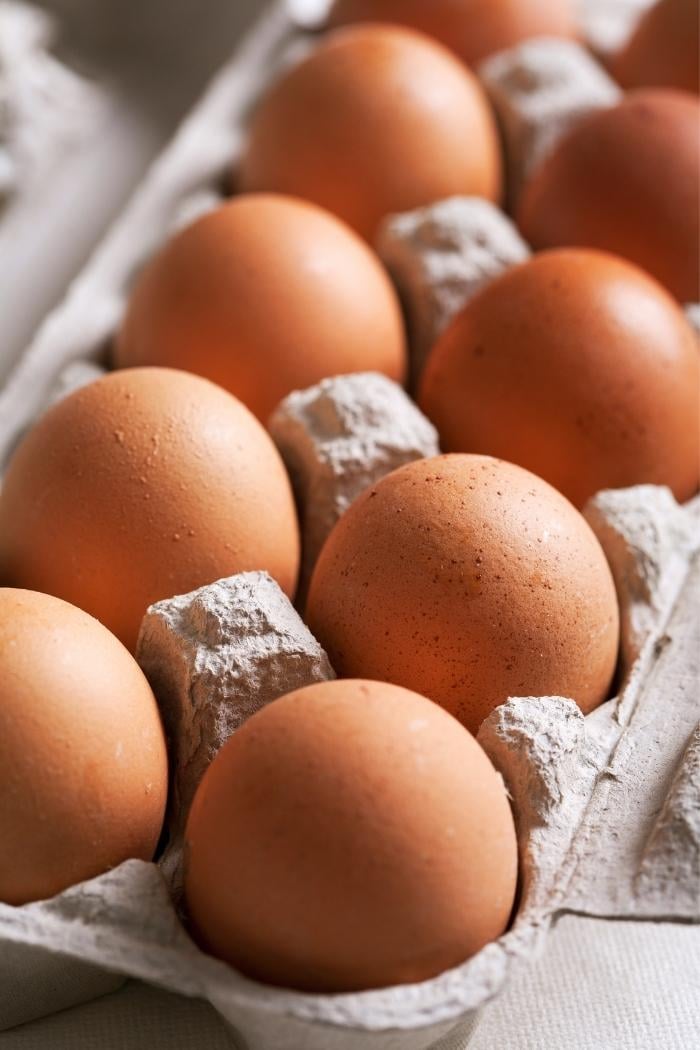
More Easy Egg Recipes:
This Migas Casserole recipe is an even easier way to make migas eggs at home! Plus, you can customize the recipe as you see fit.
These Baked Eggs with Kale and Sausage are delicious enough to add them to your holiday menu, but they are easy enough to enjoy them for a weekday breakfast as well.
These mini Crustless Broccoli Quiche are made in muffin tins and are perfect for on-the-go breakfasts! This delicious recipe is great for meal prepping and can be frozen for later.
This easy Quiche Lorraine recipe features leeks, bacon, and shredded gruyere cheese. A showstopper for any breakfast or brunch!
These Mini Zucchini Frittata Muffins are the perfect way to use up the garden’s abundance of zucchini. Make a big batch now and freeze for later!
Who doesn’t love a good kitchen tip? Looking for more kitchen tutorials? Check out the entire Kitchen Tips and Tricks archive for lots of great ideas!
Stay Inspired in the Kitchen!
Want more delicious recipes, kitchen tips, and meal inspiration? Sign up for the Good Life Eats Newsletter and get:
✔ Tried-and-true recipes—from quick weeknight meals to special occasion favorites.
✔ Seasonal meal ideas—helping you make the most of fresh, in-season ingredients.
✔ Time-saving kitchen tips—boosting your confidence and creativity in the kitchen.
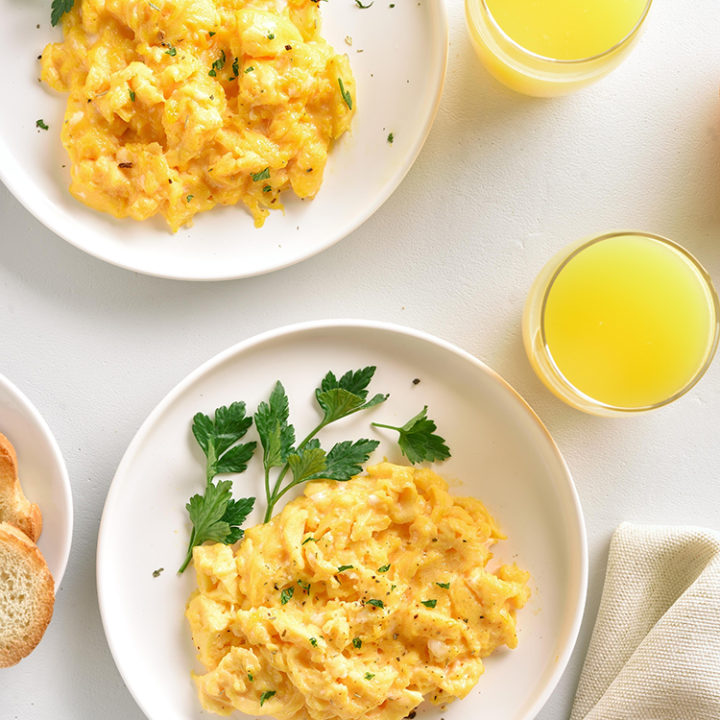
How to Cook Scrambled Eggs
Soft and fluffy scrambled eggs are easy to make so long as you use the right method. In this post, I’ll explain how to cook scrambled eggs perfectly every time, whether it’s better to use milk or water in your eggs (or neither!), what to serve with scrambled eggs, and so much more!
Ingredients
For 1 serving:
- 2 large eggs
- 2 tablespoons milk
- 1/8 teaspoon salt
- 1 grind black pepper
- 1 1/2 teaspoons unsalted butter
For 4 servings:
- 8 large eggs
- 1/2 teaspoon salt
- Several grinds black pepper
- 1/2 cup milk
- 1 tablespoons unsalted butter
Instructions
- To a medium-sized bowl, add eggs, salt, pepper, and milk.
- Whisk the eggs with a fork just until large bubbles form. You should no longer see streaks in the egg mixture.
- Heat the butter in a skillet.
- When the butter begins to foam, gently swirl the pan to coat the bottom and sides with the butter.
- Before the butter is finished foaming, pour the eggs into the skillet.
- Slowly push the eggs from one side of the pan to the other. I like to use a wooden spatula to lift and fold the eggs as I’m moving them across the pan.
- Transfer the eggs to a plate once they form curds and clump into a single mound, but still look shiny and wet.
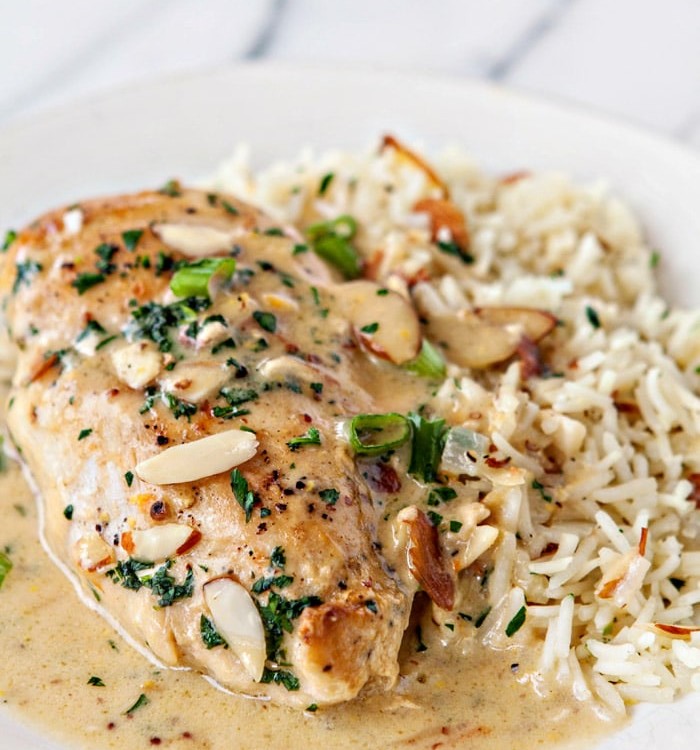
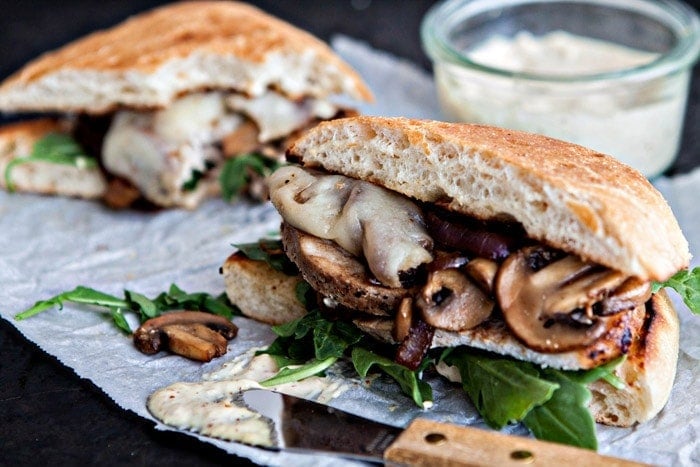
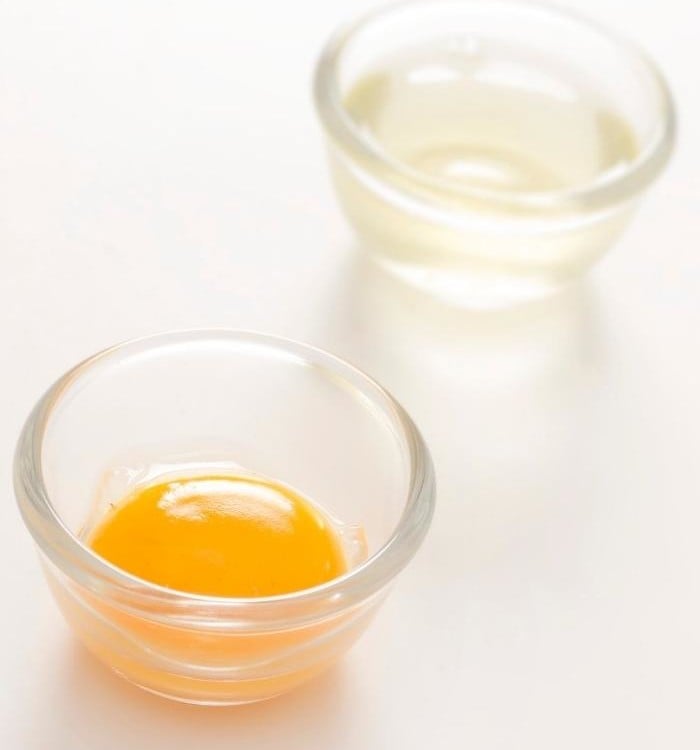
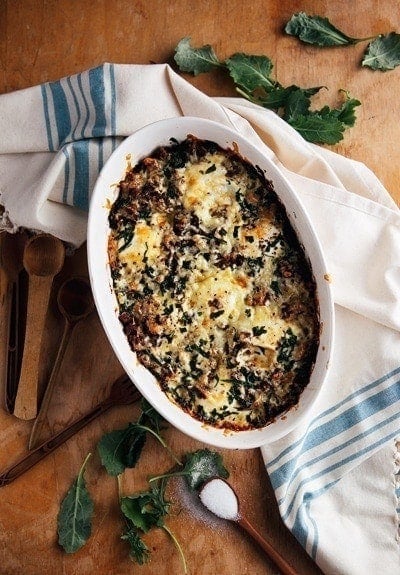
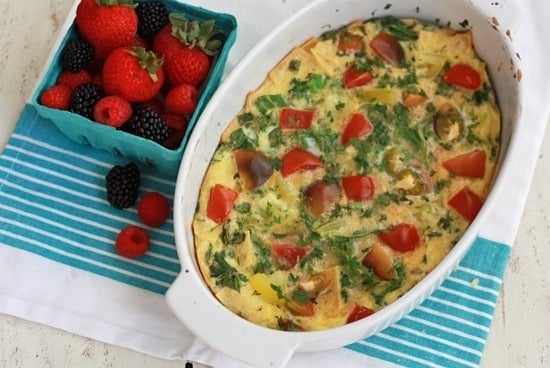
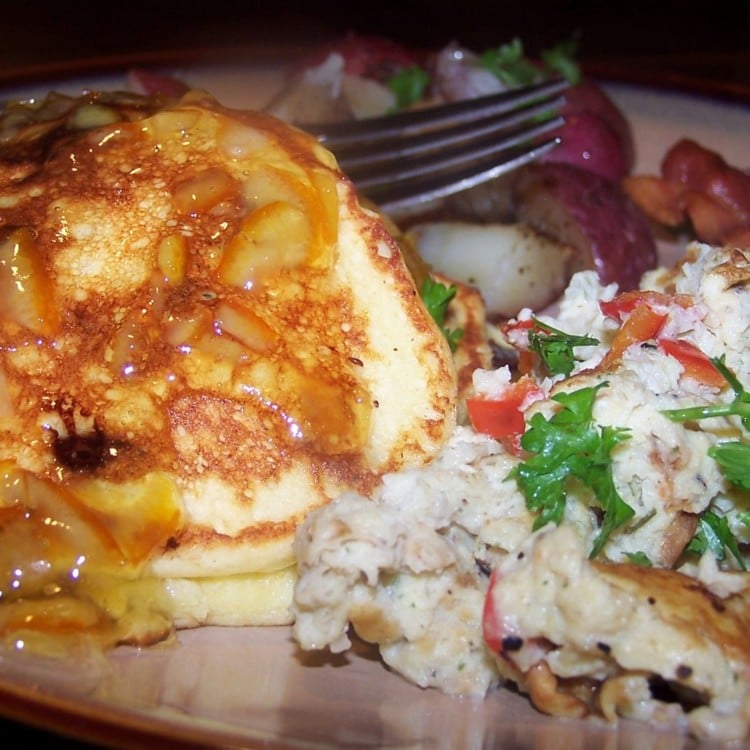
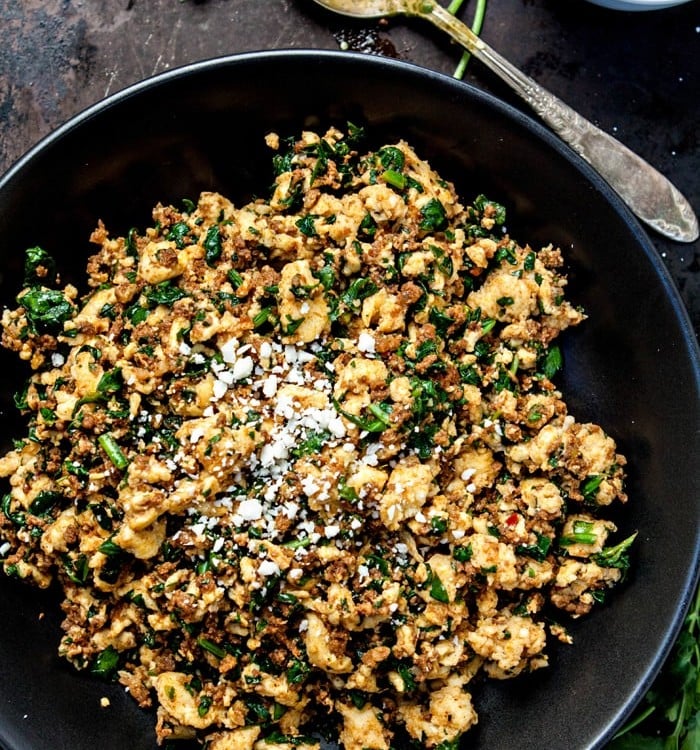
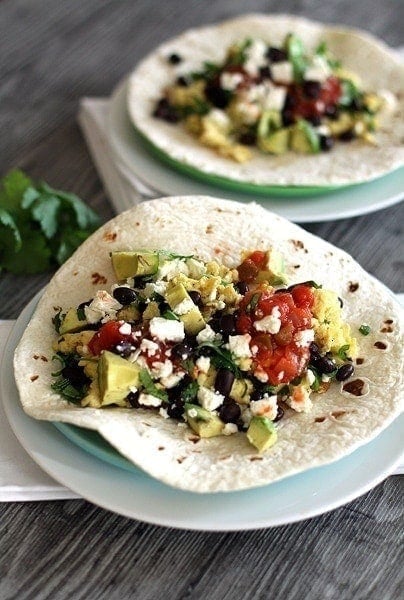
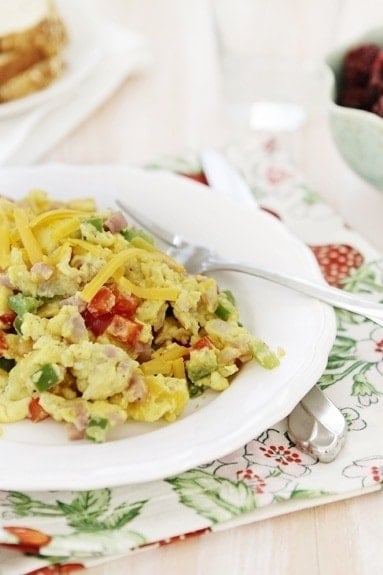
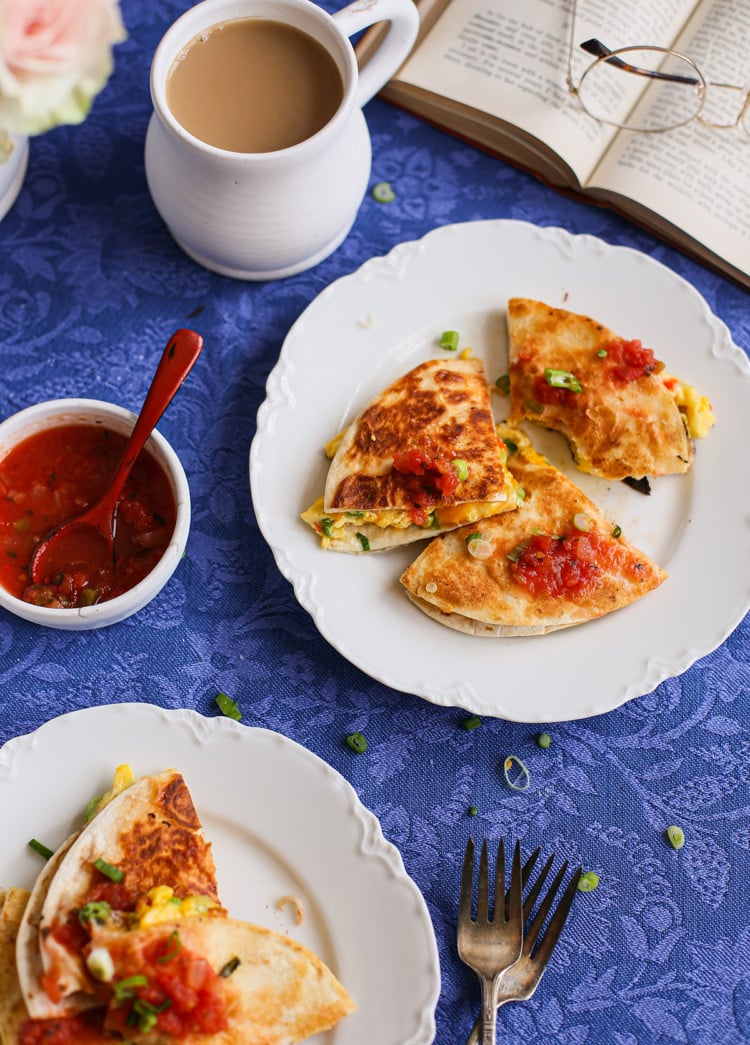

Leave a Comment